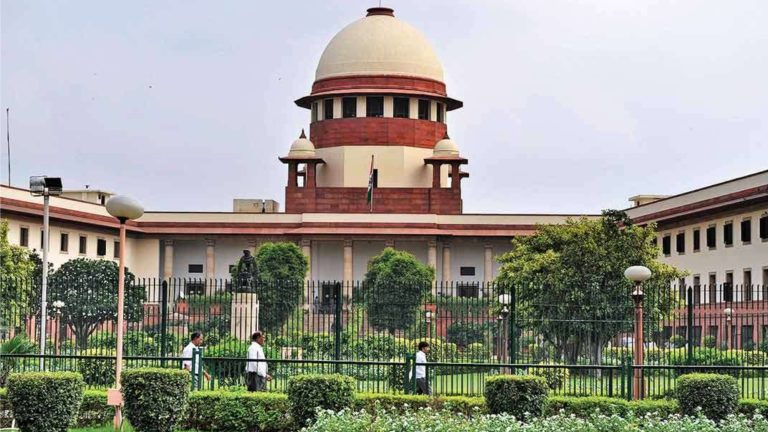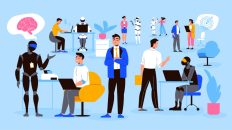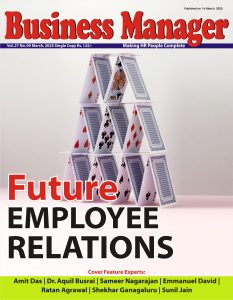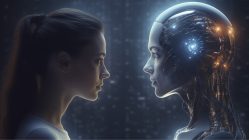In a crucial judgment, the Supreme Court held the provisions of the Employees Pension (Amendment) Scheme 2014 to be legal and valid.However, so far as the present members of the fund are concerned, the Court has read down certain provisions of the scheme.
While allowing the appeals filed by the Employees Provident Fund Organization and the Union Government challenging the Kerala, Rajasthan and Delhi High Court judgments which had quashed the Employee’s Pension(Amendment) Scheme, 2014, the Court read down certain provisions of the scheme.
In a relief to several employees, the Court held that employees who have not exercised the option to join the Employees Pension Scheme must be given a further chance of 6 months to do so.
The Court said that the employees, who were entitled to join the pension scheme but could not do so as they did not exercise the option within the cut-off date, should be given an additional opportunity as there existed lack of clarity regarding the cut-off date in view of the High Court judgments invalidating the provisions of the Employee’s Pension (Amendment) Scheme,2014. Therefore, the Court exercised its powers under Article 142 of the Constitution to extend the cut-off date.
The Court further held as invalid the condition in the 2014 scheme that the employees are required to make a further contribution at the rate of 1.16% on the salary exceeding Rs.15,000/-. The Court held this condition to make additional contribution on the salary exceeding the threshold limit to be ultravires. However, this part of the judgment has been kept in suspension for 6months to enable the authorities to generate funds.
Also read: Hiring activity slows owing to festivities in Oct’22: Report
The Court further held that it has agreed with the judgment in R.C. Gupta v.Regional Provident Fund Commissioner.
A bench comprising Chief Justice of India Uday Umesh Lalit, Justices Aniruddha Bose and Sudhanshu Dhulia had reserved the judgment.The following are the excerpts of the judgment.
Justice Aniruddha Bose read out the operative portion of the judgment as follows :
The provisions contained in notification no. GSR 609E dated 22nd August2014 are legal and valid. So far as so far as the present members of the fund are concerned, the we have read down certain provisions of the scheme.
Amendment to the Pension Scheme brought by notification no. GSR 609Ebrought shall apply to employees of exempted establishments as employees of regular establishments. Transfer of Funds from the exempted establishments shall be in the manner that we have already deducted.
Employees who exercised option under proviso under Paragraph 11 (3) of the1995 scheme and continue to be in service as on Sept 1, 2014 will be guided by the amended provisions of 11(4) of the scheme.
The members of the scheme who did not exercise option under proviso to para 11(3) under Pension Scheme as it was before 2014 Amendment, would be entitled to exercise option under 11(4) of the post amendment scheme.Their right to exercise option before Sept 1, 2014 is crystallised in RC Gupta case judgment.
The scheme as it stood before 2014 did not provide for any cut off date and thus, those members shall be entitled to exercise option in terms of paragraph 11(4) of the scheme as it stands at present.
Their option shall be in the nature of joint option covered in pre-amended para 11(3) and as also the amended para 11(4). There was uncertainty regarding validity of the post amendment scheme, which was quashed by the High Courts. Thus, all employees who did not exercise option but are entitled to do so, but could not due to interpretation of the cut off date, ought to be given certain adjustments.
Time to exercise option under para 11(4) of the scheme under the circumstances shall stand extended by a further period of four months. We are giving this direction in exercise of our jurisdiction under Art 142 of the Constitution. Rest of the requirements as per amended provision shall becomplied with.
The Employees who had retired before 1st September 2014 without exercising option under para 11(3) of the pre-amendment scheme, haveal ready exited from the membership. They would not be entitled to benefit of this judgement.
The employees who retired before September 1, 2014 and who exercised the option shall be covered by 11(3) of Pension scheme as it stood prior to the2014 Amendment.
The requirement of members to contribute at 1.16% if the salary exceeds Rs15,000 as an additional contribution under the Amended scheme is held to be ULTRA VIRES of the 1952 Act. But for the reasons mentioned above, this part of the order suspended for SIX MONTHS. We do so to enable authorities to make adjustments in the scheme so that additional contribution can be generated from other legitimate sources within the scope of the Act…. We are not speculating on what steps the authorities should take as it is for the legislature and framers of the scheme to make necessary amendments. For the above said period of 6 months or till such time any Amendment is made,whichever is earlier, employee contribution shall be a stop gap measure.The said sum shall be adjustable on the basis of the alteration to the scheme that may be made.
We do not find any flaw in altering the basis of computation of pensionable salary.
We agree with the view taken by the division bench in RC Gupta case so far as the interpretation of proviso to 11(3) pre-amendment provision is concerned.
Fund Authorities shall implement directives contained in the said judgement within EIGHT WEEKS subject to earlier directions.
All appeals which we have heard are allowed in the above terms and the judgements which are impugned are modified accordingly.
The Kerala High Court had set aside the 2014 amendment by holding that the threshold limit of Rs 15,000/-monthly salary for joining the pension fund is unreasonable. The High Court allowed paying pension in proportion to the salary above the threshold limit of Rs 15,000 per month and held that there can be no cut-off date for joining the pension scheme.
What were the changes brought by the 2014 amendment?
The 2014 amendment had the brought following changes.
- Limits the maximum pensionable salary to Rs.15,000 per month.Prior to the amendment, though the maximum pensionable salary was only Rs.6,500 per month, the proviso to the said paragraph permitted an employee to be paid pension on the basis of the actual salary drawn by him provided, contribution was remitted by him on the basis of the actual salary drawn by him preceded by a joint request made for such purpose jointly with his employer. The said proviso has been omitted by the amendment thereby capping the maximum pensionable salary at Rs.15,000. The Scheme has been amended further by a subsequent notification, the Employee’s Pension (Fifth Amendment) Scheme, 2016to provide that the pensionable salary for the existing members who prefer a fresh option, shall be based on the higher salary.
- Confers an option on the existing members as on 1.9.2014 to submit a fresh option jointly with their employer to continue to contribute on salary exceeding Rs.15,000 per month. Upon such an option, the employee would have to make a further contribution at the rate of 1.16%on the salary exceeding Rs.15,000/-, additionally. Such a fresh option would have to be exercised within a period of six months from 1.9.2014.A power to condone the omission to exercise the fresh option within the said period of six months by a further period of six months is conferred on the Regional Provident Fund Commissioner. If no such option is made, the contribution already made in excess of the wage ceiling limit would be diverted to the Provident Fund Account, along with interest.
- Provides that monthly pension shall be determined on pro-rata basis for pensionable service up to 1st of September, 2014 at the maximum pensionable salary of Rs.6,500 and for the period thereafter at the maximum pensionable salary of Rs.15,000 per month.
- Provides for withdrawal of the benefits where a member has not rendered the eligible service as required.
The main argument raised by the EPFO is that the Pension Fund and the Provident Fund are distinct and the membership in the latter will not automatically translate into a membership of the former. It was argued that Pension Scheme is intended for low-age employees and if the persons drawing salaries above the cut-off limit are allowed to draw pension as well,it will create huge imbalance within the fund. The 2014 amendments were brought to address the issue of cross-subsidization between the pension and provident funds.
The pensioners disputed the argument of financial burden raised by the EPFO. It was argued by them that the corpus fund remains intact and the payments have been made from the interest. The pensioners also disputed the argument of the EPFO that there has to be separate option exercised within the cut-off period to join the pension scheme and contended that the stand of the EPFO is contrary to the statute.
Stay connected with us on social media platform for instant update click here to join our LinkedIn, Twitter & Facebook



































Add comment